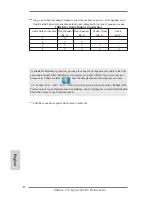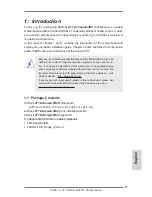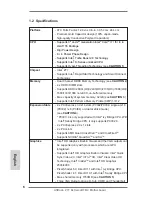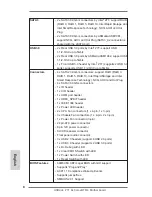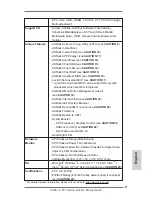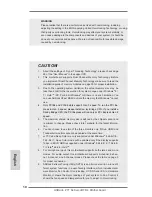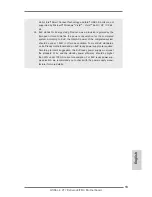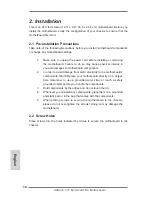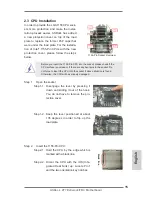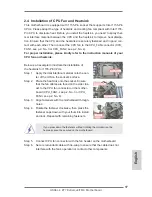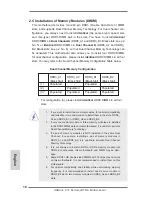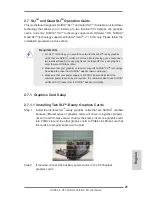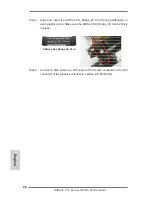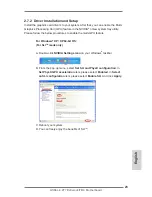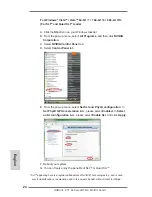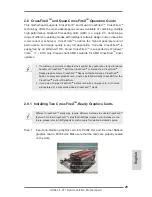
10
ASRock Z77 Extreme6/TB4 Motherboard
CAUTION!
1. About the settings of “Hyper Threading Technology”, please check page
65 of the “User Manual” in the support CD.
2. This motherboard supports Dual Channel Memory Technology. Before
you implement Dual Channel Memory Technology, make sure to read the
installation guide of memory modules on page 18 for proper installation.
3. Due to the operating system limitation, the actual memory size may be
less than 4GB for the reservation for system usage under Windows
®
8 /
7 / Vista
TM
/ XP. For 64-bit Windows
®
OS there is no such limitation. You
can use ASRock XFast RAM to utilize the memory that Windows
®
cannot
use.
4. Only PCIE2 and PCIE4 slots support Gen 3 speed. To run the PCI Ex-
press in Gen 3 speed, please install an Ivy Bridge CPU. If you install a
Sandy Bridge CPU, the PCI Express will run only at PCI Express Gen 2
speed.
5. The maximum shared memory size is defined by the chipset vendor and
is subject to change. Please check Intel
®
website for the latest informa-
tion.
6. You can choose to use two of the three monitors only. D-Sub, HDMI and
Thunderbolt monitors cannot be enabled at the same time.
7. xvYCC and Deep Color are only supported under Windows
®
8 64-bit / 8 /
7 64-bit / 7. Deep Color mode will be enabled only if the display supports
12bpc in EDID. HBR is supported under Windows
®
8 64-bit / 8 / 7 64-bit /
7 / Vista
TM
64-bit / Vista
TM
.
8. For microphone input, this motherboard supports both stereo and mono
modes. For audio output, this motherboard supports 2-channel, 4-chan-
nel, 6-channel, and 8-channel modes. Please check the table on page 3
for proper connection.
9. ASRock Extreme Tuning Utility (AXTU) is an all-in-one tool to ne-tune dif-
ferent system functions in a user-friendly interface, which includes Hard-
ware Monitor, Fan Control, Overclocking, OC DNA and IES. In Hardware
Monitor, it shows the major readings of your system. In Fan Control, it
shows the fan speed and temperature for you to adjust. In Overclocking,
WARNING
Please realize that there is a certain risk involved with overclocking, including
adjusting the setting in the BIOS, applying Untied Overclocking Technology, or using
third-party overclocking tools. Overclocking may affect your system’s stability, or
even cause damage to the components and devices of your system. It should be
done at your own risk and expense. We are not responsible for possible damage
caused by overclocking.
English




